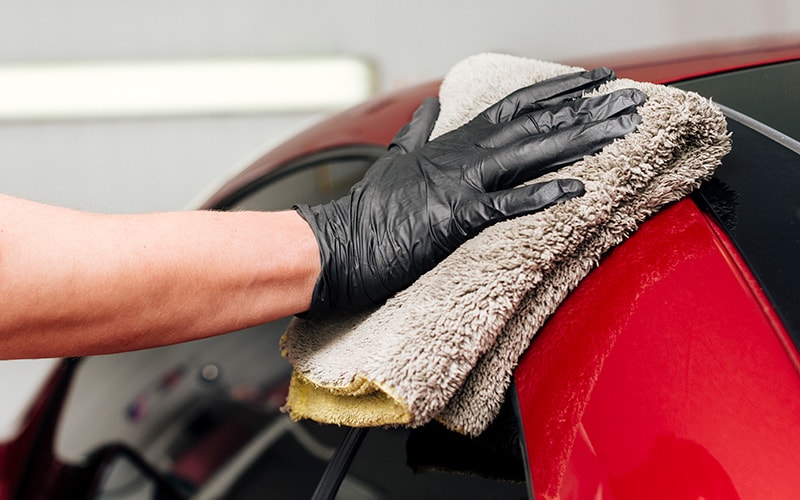Car drying towels are a dime a dozen. To make matters worse, every car wash, towel store, and online retailer has their own unique towel branding that makes identification hard. But what makes a towel scratch-free or good at drying cars?
In this article, we cover the different types of car drying towels, highlight their applications, and discuss their softness factors.
Types of Car Drying Towels
There are several types of car drying towels on the market. While these all may seem different, they are generally made from one of three materials.
1. Cotton Towels
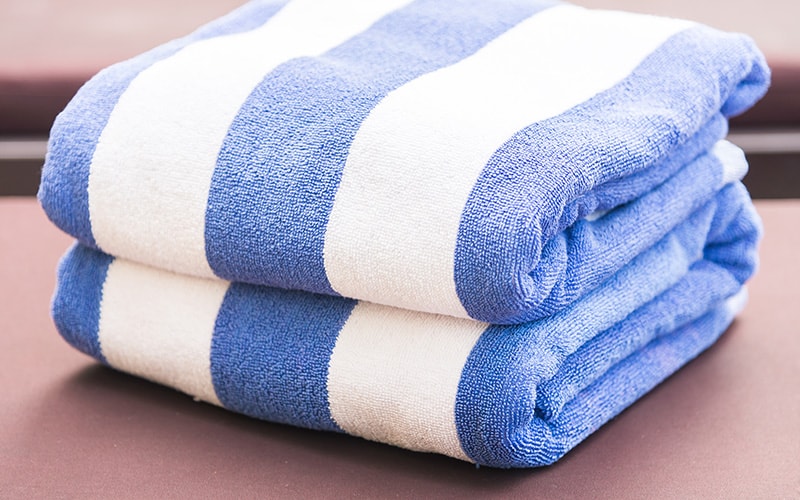
Cotton towels are made from 100% natural cotton fiber. They are large, absorbent, fluffy, and most importantly, affordable. Most people use cotton towels to wash and dry their cars as they can hold a lot of soapy water.
While cotton towels do a decent job of drying cars, they aren’t the best. Cotton is less absorbent and less soft than microfiber towels. There is a good chance that you will scratch the paintwork when using a cotton towel.
Best Application
- Car Washing
- Drying Car Interior
2. Microfiber Towel
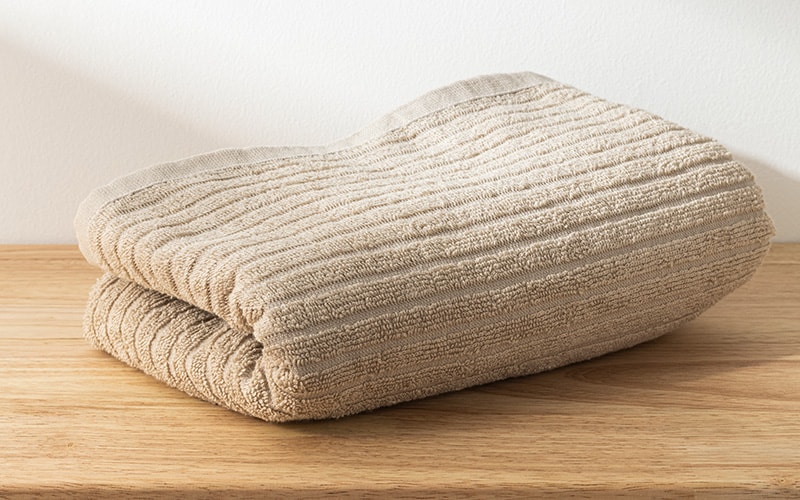
Microfiber towels are made from a blend of ultra-fine polyester and polyamide (nylon) fibers. Auto detailing workshops consider them the gold standard for car drying towels. And for a very good reason.
Compared to traditional cotton towels, microfiber towels offer twice the absorbency. Thus, drying cars with a microfiber towel requires less effort and results in better performance. A good quality microfiber towel will absorb all of the surface liquid in the first wipe. Meaning there is a zero chance of leaving water spots.
Best Applications
- Car Drying Towels
- Interior Dust Removal
- Glass Cleaning
3. Chamois Towels
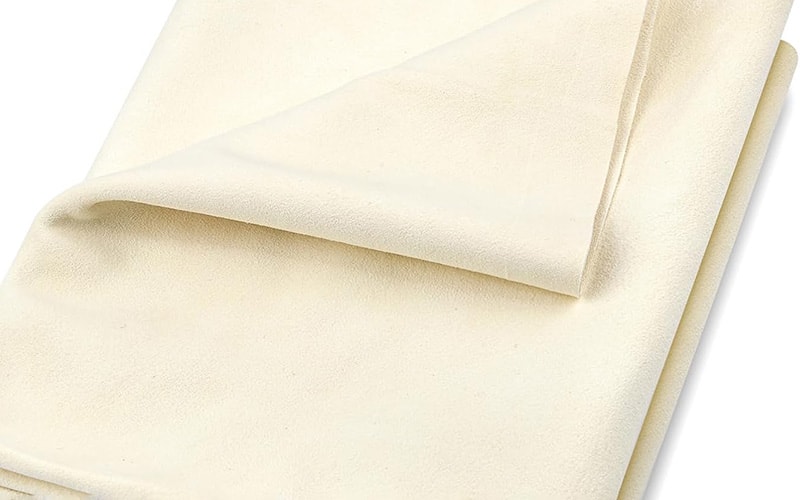
A chamois towel or chamois leather is a porous fabric made from goat skin. However, modern chamois is often manufactured from sheep or deer skin. It is a traditional material used for drying and buffing cars.
Unlike normal leather, a chamois has a very distinct texture. Allowing it to absorb five times its body weight in water. Its surface pile grabs onto dirt and water when drying cars. Likewise, it quickly releases those dirt particles when rinsed with water.
However, maintaining a chamois cloth is a challenging task. It can easily harden during the drying process, and future uses will occasionally scratch surfaces. To make matters worse, it’s considerably more expensive than a cotton or microfiber towel.
Best Applications
- Car Drying Towels
- Interior Cleaning
- Cleaning Plastic or Leather Surfaces
Cotton vs. Microfiber vs. Chamois: Which is the Best Car Drying Towel?
Now, let’s take everything we learned so far and chart it out. Here is a quick comparison of the top car drying towels.
Table 1- Comparing the various properties of different types of car drying towels.
| Towels | Cotton | Microfiber | Chamois |
| Absorbency | Medium | Very High | High |
| Durability | Medium | High | High |
| Scratch Potential | Low | Very Low | Low |
| Softness | Soft | Very Soft | Soft When Wet |
| Versatility | Everyday Use | Multi-Purpose | Limited |
| Cost | Medium | Medium-High | High |
| Car Applications | Basic DryingCar Wash Towel | Drying TowelsDetailing TowelsGlass Cleaning | Drying Towels |
It’s not even a competition. All three towels are good at drying cars. However, only microfiber towels offer a no-compromise solution. It’s softer, more absorbent, and more versatile than the other towels.
8 Benefits of Microfiber Car Drying
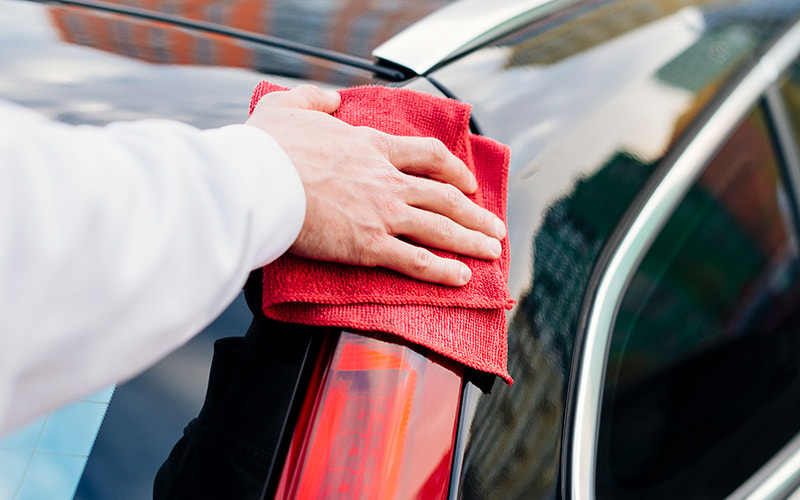
Let’s get into all the reasons that make microfibers a high-quality towel material.
1. Super Absorbent
Gram for gram, microfiber cloths are the most absorbent of all other options. It is scientifically designed to hold as much water as possible while maintaining a compact profile.
A large microfiber towel can dry an entire car in a single go without needing to be wrung out.
2. Streak-Free Finish
Since microfiber drying towels absorb the maximum amount of water, they reduce the risk of water spots and streaks. You can further increase the absorbency of microfiber towels by getting ones that are thicker or with a special twist loop weave.
3. Scratch Safe
Maybe the biggest benefit of using microfiber drying towels is the zero scratch risk. Microfiber towels are so absorbent that you don’t need to press down on the car. So you’re not accidentally pressing the dust and dirt particles into the paint.
4. Lint Free
Lint is an annoying but natural part of a fabric’s lifespan. However, microfiber towels don’t leave lint on your car. This is because the fibers are too short and less likely to be pulled out from regular use.
5. Fast Drying
A towel with good breathability will dry quickly because the air passing through it will help remove excess moisture. Since microfiber towels are super breathable, they dry quickly.
Most brands recommend against tumble drying microfiber towels. Instead, hang it on a clothesline or a wire rack, and let it air dry.
6. Durable & Long Lasting
Microfiber drying towels are fairly durable, and with proper washing and care, you can further increase their lifespan. A low-quality microfiber towel will start to fray after 50 washes. But high-quality microfiber towels will easily last for 200-300 washes.
7. Lightweight
Weight is another big selling point for microfiber-based car drying towels. Microfiber towels absorb more water while weighing less than a cotton or chamois towel.
Car cleaning and drying require constant hand movement. A heavy towel will eventually start to stress your wrist. You need a lightweight microfiber cloth that is easy to handle.
8. Versatile Design
Microfiber drying towels are versatile. You can use them for cleaning car windows, drying the interior or exterior, polishing, precision auto detailing, and more. Most of these benefits stem from the different variations of microfiber towels.
Which Type of Microfiber Towel Should You Choose?
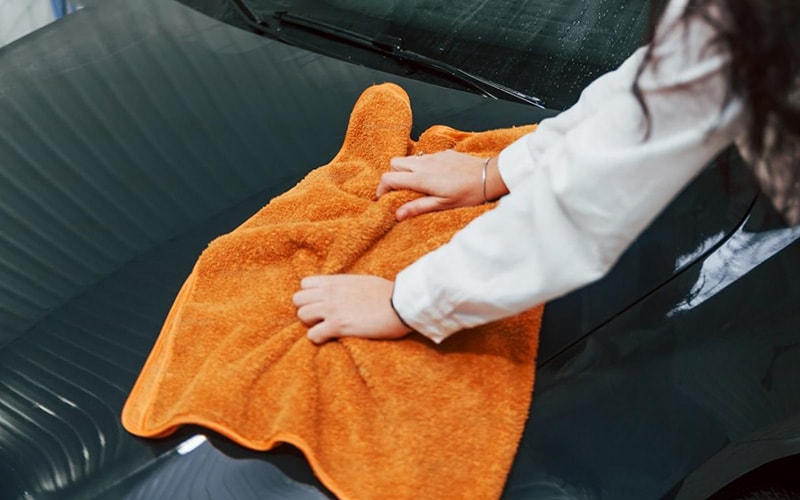
Let’s talk about the different types of microfiber towels and their unique advantages. Remember, there is no wrong towel, just the wrong application.
1. Weave Options
Weave refers to the process of stitching a microfiber tread into a towel. The type of weave affects the absorption, durability, softness, and fray resistance of the car drying towels.
- Terry Loop Weave: This is a standard weave option, which results in raised loops of treads that increase water absorption and dust collection.
- Twist Loop Weave: Similar to a terry towel, it has twisted loops that increase the surface area without increasing the towel’s thickness. It’s significantly more absorbent than the terry weave.
- Waffle Weave: This weave has patches of raised and depressed areas in the towel that resemble a waffle. It offers similar absorbency to terry weave, but without the risk of fraying.
- Coral Fleece Weave: Similar to terry weave, but instead of loops, you have individual standing treads. This results in softer and more absorbent drying towels.
- Velour Knit: This special type of knit results in the softest, most plush microfiber towel. This type of drying towel is the least absorbent and better suited for dusting.
2. Edge Stitching
After weaving a towel, you need to stitch the edges so the thread doesn’t unravel. There are three great edge options for microfiber car drying towels.
- Edgeless Towel: An ultrasonic machine cuts and seals the towels from a large roll. It’s a soft edge but more likely to fray.
- Piped Edged: A separate fabric is stitched to the edges to prevent fraying. Microfiber towels with a soft suede edge stitch are the gold standard here.
- Hemmed Edge: Hemming is the process of folding the towel edges inwards and sewing them shut. It results in a more uniform design with increased absorbency and softness.
3. Weight (GSM)
GSM, or grams per square meter, is a convenient way to determine the thickness and density of drying towels.
- 400-600 GSM: This is the lowest you should go with car drying towels. Any lower and you will have poor water absorption. Low GSM towels are also more likely to scratch surfaces.
- 600-1000 GSM: Car detailing towels in this range effectively dry your car without being too heavy. Your specific towel choice should be based on ease of handling.
- 1000-2000 GSM: These towels are so dense that manufacturers often restrict their size so it’s easy to handle. Heavy GSM towels are ideal for drying large vehicles.
4. Blend Ratio
Microfiber towels are made from a blend of polyester and nylon. The polyester is responsible for towel durability, and nylon brings softness and absorbency. You will often see the microfiber blend marketed as a ratio of polyester to nylon. For example, an 80/20 blend means the towel contains 80% polyester and 20% nylon.
- 80/20 Blend: This blend is less absorbent and not recommended for car drying towels.
- 70/30 Blend: This is a sign of a good-quality car drying towel. Most reputable retailers only sell a 70/30 blend towel.
A Quick Guide to Buying Car Detailing Towels
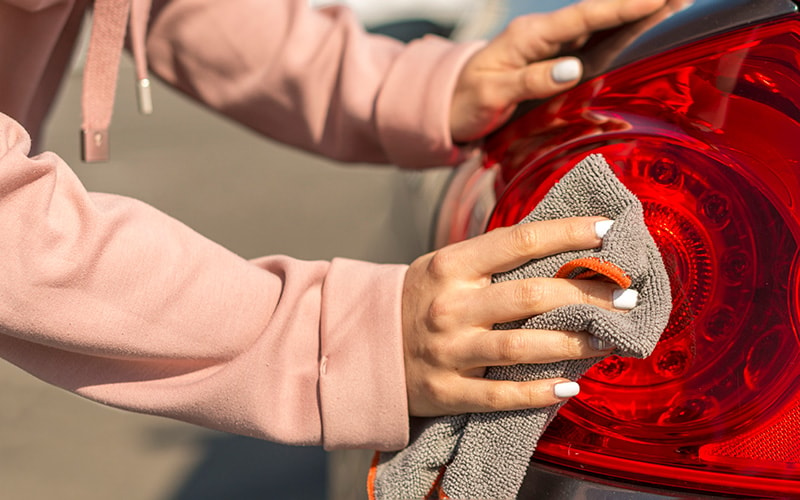
Here is a quick guide to help you buy the best towel to dry a car without scratching the paint.
1. Absorbency Requirements
The general rule for a microfiber car drying towel is that more absorbency is better. There are three ways to make a towel super absorbent.
- Increase Size
- Increase GSM
- Use Terry or Twist Loop Weave
A very good quality drying towel will have a decent size, 20×20 inches is recommended. It should also have a twisted loop weave with an 800 GSM weight.
2. Functional Requirements
We generally recommend buying two towels for car detailing. One towel for drying the base and another smaller towel for drying the rims, door handles, and windows. Many car enthusiasts prefer to have multiple towels on hand for effective drying.
Each towel is chosen based on its desired function.
- Drying Body: Use a large towel that covers the maximum surface area of the car. Go with a towel that is at least half the size of your car hood.
- Drying Windows: Get a small towel that easily fits in your hand. Make sure it has good GSM for maximum absorbency.
- Drying Rim: Use a smaller towel with a lower GSM to get in between the spokes.
Unless your car has some type of scratch-resistant coating or wrap, always go with the softest towel you can find. A rough towel can easily scratch or even chip your car’s paint.
3. Size and Portability
Large vehicles need more effort to clean and dry. We recommend using larger drying towels for trucks, pickups, and minivans. A 30×30-inch towel is generally considered a good size. It will dry quickly and leave a streak-free shine on your car. For everything else, we recommend a 20×20-inch towel.
Smaller towels mean more wipes, and that increases the chances of leaving streaks on the car. However, sometimes you need a smaller towel to cover every square inch of the car. Areas like the rims, bumpers, and exhaust pipes require small, easy-to-handle towels.
4. Cost Estimate
While price shouldn’t matter for a quality towel. It should at least be part of your purchasing discussion. The size, GSM, weave, and blend all increase the price of car detailing products. Look for deals that give you a great value at a great price.
5 Simple Tips for Scratch-Free Car Drying
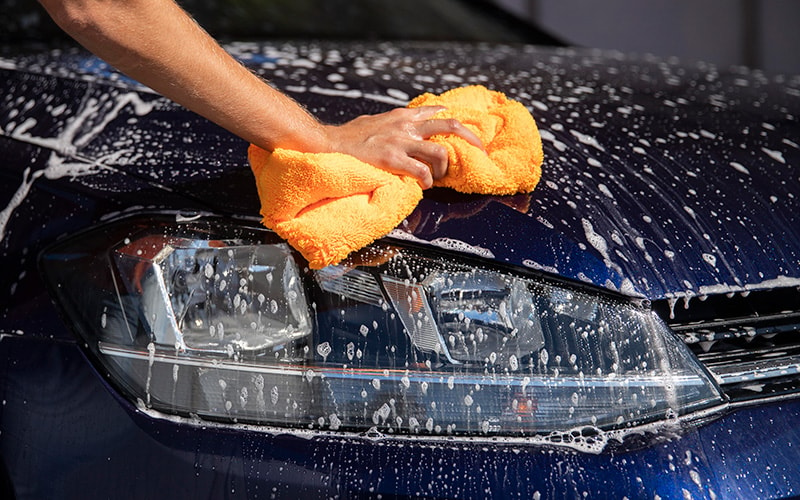
Here are five amazing tips to help you prevent accidental scratches when drying your car.
- Rinse First: Rinse your towels before use. This removes any dirt and dust that was trapped inside.
- Use Microfiber Towels: Microfiber towels are simply the best drying towels. They are much softer and less likely to scratch surfaces.
- Pat, Don’t Rub: Gently pat down your car’s surface with the towel. Rubbing has a higher chance of leaving streaks and scratches.
- Large Wipes: Go with one big sweep across the car surface. Several small motions leave swirl marks and increase the risk of scratching.
- Use Folded Towels: Fold your towels and switch sides when one side gets saturated with water.
Care Instructions for Your Car Drying Towel
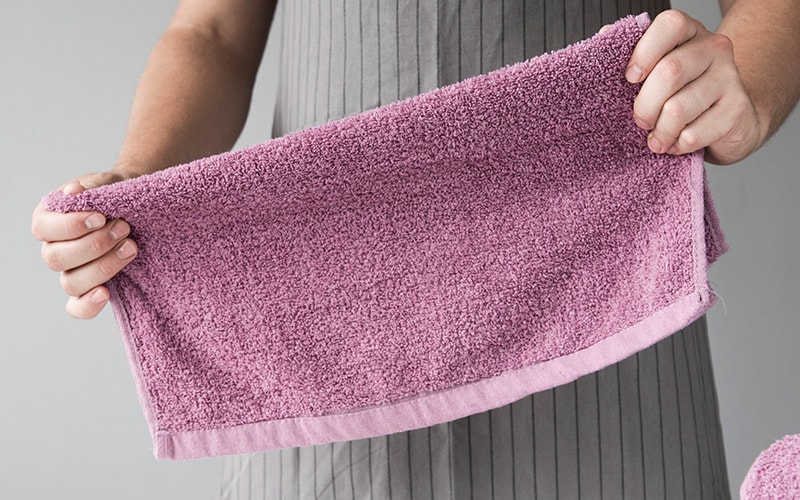
Car drying towels can be very expensive. So, proper care and timely maintenance are necessary.
Here are some simple instructions for taking care of your towels.
- Machine wash your microfiber towel in warm water, but tumble dry on a low heat setting.
- Always use a mild detergent and avoid using bleach or fabric softeners.
- Wash towels separately. Make sure there is no cross-contamination.
- Don’t use microfiber towels on rough surfaces.
- Moisture can result in bacterial growth. So, store your towels in a dry, clean space.
- Replace your microfiber towels after 300 wash cycles.
Conclusion
There are various car drying towels on the market. Each claiming to be the very best. Identifying the right towel for your needs can be complicated. Remember to prioritize softness and absorbency. These are the two biggest factors that keep you from scratching your car’s paint job. Use this guide to inform your next towel purchasing decision.
Dry Your Car with Ultra Soft Microfiber Towels from Manywell!
Manywell is a leader in the cleaning products industry. We have the softest microfiber towels for drying and detailing cars. You can also get car cleaning sponges and disposable polishing cloths.
Your car is special to you. So you should treat it with special care. Get high-quality and fully customizable towels from Manywell. Contact us now!

